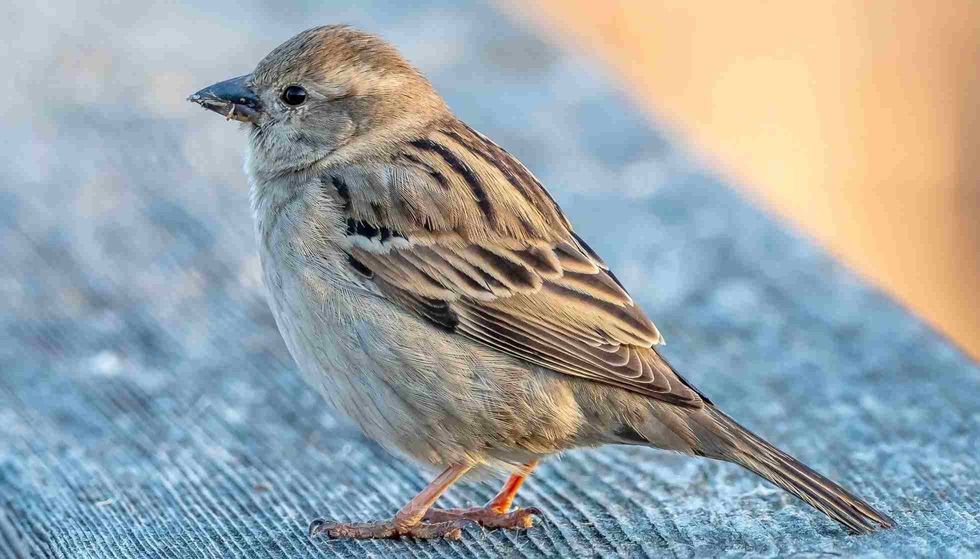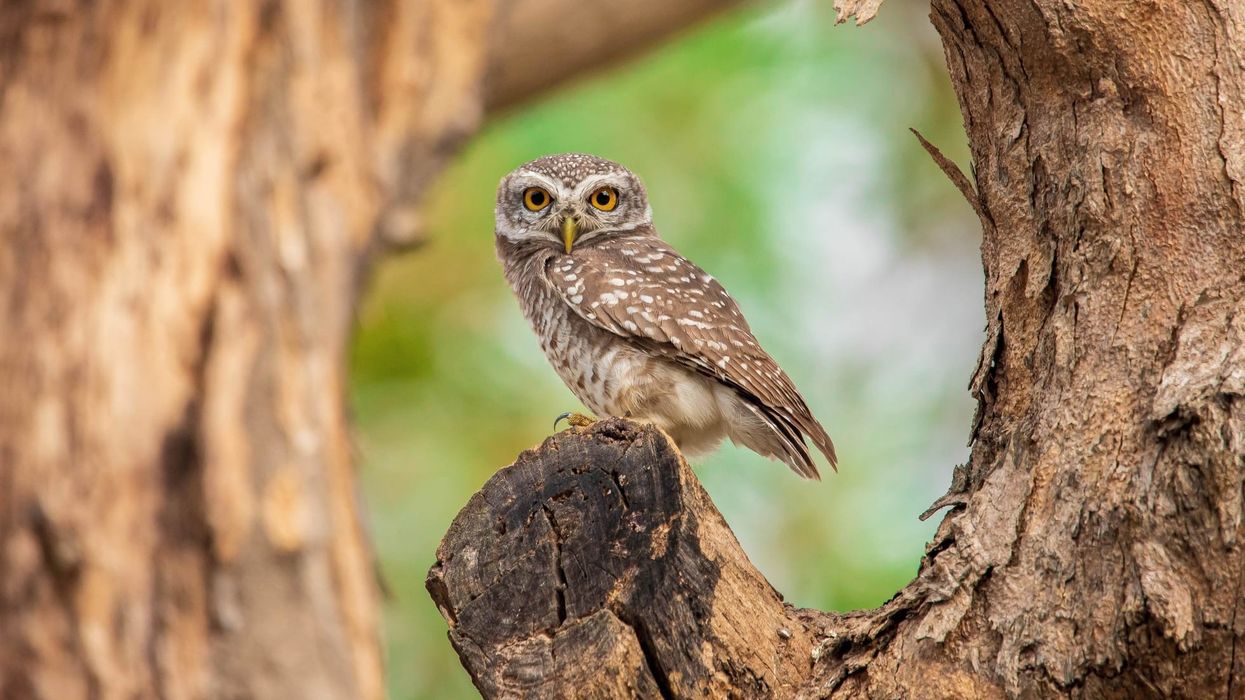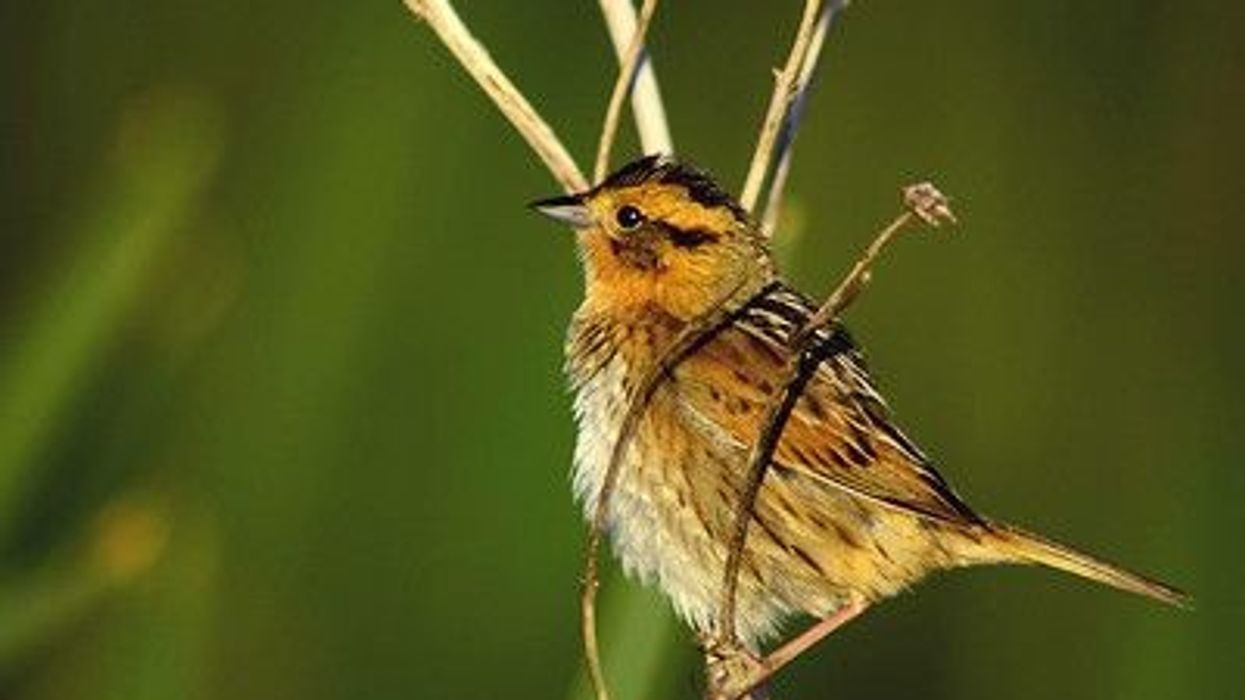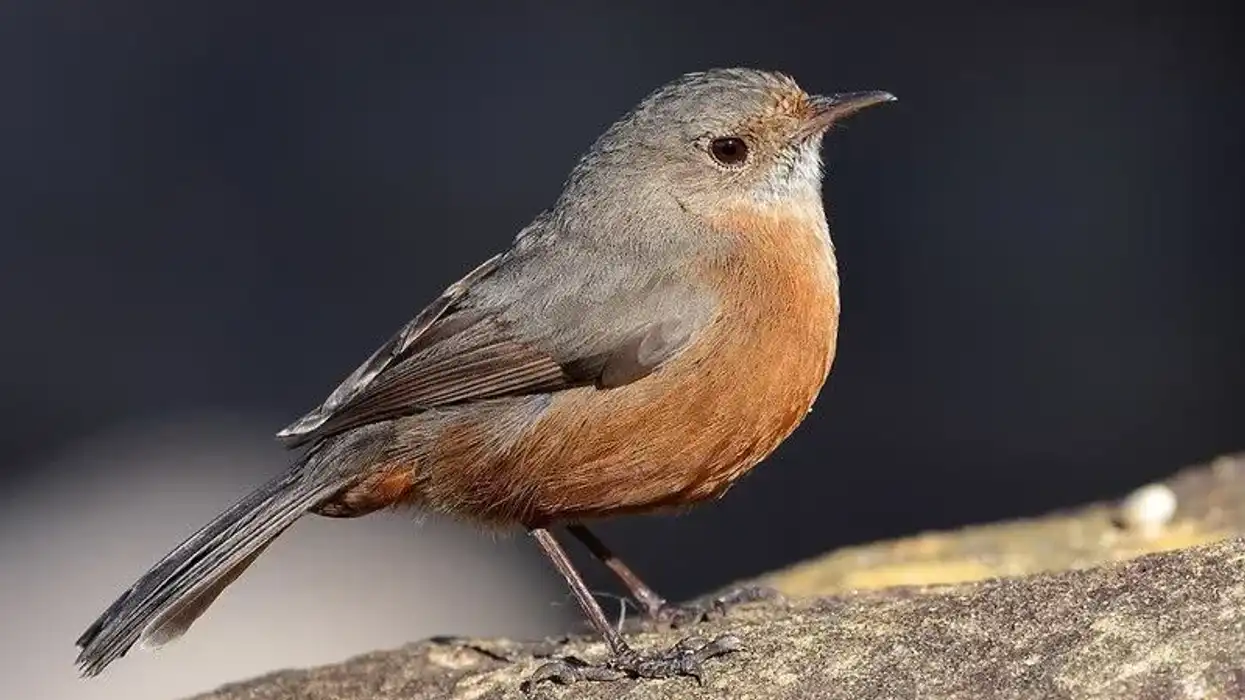The house sparrow (Passer domesticus) is of the family Passeridae and is found in many parts of the world. Females and young birds of these species are of gray and pale brown color, while males of this species have bright black, white, and brown markings.
The house sparrow bird is native to Europe, Asia, and the Mediterranean Basin. Its introduction to Africa, Australia, and America has been accidental or unintentional. These are the most widely distributed wild birds.
The house sparrow finds the human habitat very suitable. It can live in both urban and rural areas. They are found in varied habitats.
They avoid grasslands and woodlands away from human habitats. The house sparrow food is omnivorous and it eats weeds, grains and may eat insects and many other foods. Its predators are hawks, birds, mammals, and domestic cats.
House sparrows are treated as agricultural pests. It has also been kept as a pet as well as a food item.
They are very invasive and troublesome to native birds and destroys their native nest sites. The house sparrow lives in nest holes in buildings. They make their nests under tiles, the ground, in houses, and in nests of other native birds.
Its numbers are declining in recent years, but it is still listed as of Least Concern by the IUCN.
Included in this article is information regarding house sparrow nest, house sparrow call, male house sparrow pet, house sparrow nests sites, and so on.
You may also check out the fact files on American tree sparrows and sparrows from Kidadl.
House Sparrow Interesting Facts
What type of animal is a house sparrow?
The house sparrow (Passer domesticus) is a type of bird.
What class of animal does a house sparrow belong to?
The house sparrow (Passer domesticus) belongs to the class of Aves (birds).
How many house sparrows are there in the world?
There are approximately 1.6 billion house sparrows in the world.
Where does a house sparrow live?
A house sparrow lives in urban areas around a house or farms, and also in the wildlife. They make nests in buildings, the ground, and other structures to live. They are mostly found around humans and are often called one of the most human-friendly bird species.
They are found in Africa, Australia, Asia, Europe, and America.
What is a house sparrow's habitat?
The house sparrow birds can live in habitats suited for humans. The only habitats that the house sparrow birds can’t live in are dense forests and tundra. They are mostly around humans and thus are frequently found indoors.
They are also found in places such as warehouses, factories, and zoos. The ideal house sparrow habitat is building crevices and around human settlements. They can adapt to both urban and rural areas.
They have even been found in coal mines 1640.4 ft (500 m) below the ground and also feeding on the top of the Empire State Building. They have special adaptations to suit dry areas, including high salt tolerance. These birds can survive without water by having berries.
In most of its habitat, the distribution of house sparrow birds is uniform and widespread. Their distribution range in areas such as rainforest or mountain ranges however is a bit spotty.
The house sparrow birds nest from April to August.
Who do house sparrows live with?
Sparrows are very social and friendly birds. They breed, feed, and flock with their own species as well as other similar-sized flocks of birds. They are found flocking around nest boxes and bird feeders.
How long does a house sparrow live?
The house sparrow lifespan ranges between three to four years in the wildlife.
How do they reproduce?
House sparrows are polyandrous, meaning they can have multiple mates. They can have two to four broods in a year. The female house sparrow grows in size in the breeding season.
House sparrows mature very quickly and attempt to breed quickly. Copulation is mostly initiated by the female sparrow when she gives a breeding call to the male sparrow.
House sparrow nests are often made in crevices and they also use man-made nest boxes. They mate repeatedly, and the adult female lays between four to five eggs on average. House sparrow eggs are incubated by both parents for 10-15 days, after which the baby sparrows or chicks are born.
What is their conservation status?
The house sparrow is listed to be of Least Concern by the IUCN.
House sparrow is rated 8/20 on the Continental Concern Scale. After being very common in North America, colonized farmyards and barns after moving out of the continent for the complete twentieth century.
The industrialization of farms has led to the decline of house sparrows. When introduced in the USA in the mid 19th century, they were protected and fed. Soon after the populations expanded, they were seen as a nuisance. These days they are not seen as threatened and are not included in any regulations for conservation.
Despite all this attitude, there has been a sudden decline in the house sparrow population in recent years for reasons unknown. The attempts for conservation of house sparrows need to be taken anytime soon considering their fast decline.
House Sparrow Fun Facts
What do house sparrows look like?

House sparrows are small chirpy birds with white, brown, and grey feathers. They have small conical beaks which are yellow in female house sparrows and black in male house sparrows and juveniles.
The males have black bibs around their necks and are slightly larger in size. Females increase in size for the breeding season. The males have darker feathers and plumage compared to the females, which are dull grey-brown.
How cute are they?
House sparrows are chirpy little birds known for their gregarious nature. Although they can be a nuisance in flocks, they have a very cute appearance.
How do they communicate?
The house sparrow calls are songs or a series of chirps. The house sparrow song is usually a simple one with not many varied notes. They use a series of postures and behaviors to communicate with others. The house sparrow sounds are different types of vocalizations to attract males or warn of intruders.
How big is a house sparrow?
The house sparrow is a small bird with a size of 5-7 in (12.7- 17.7 cm). They are about the same size as that of a song canary.
How fast can a house sparrow fly?
The flight speed of the house sparrow has not been recorded yet.
How much does a house sparrow weigh?
The house sparrow weighs between 0.7 - 1.4 oz (20- 40 g).
What are the male and female names of the species?
Male house sparrows are called cocks and females are called hens.
What would you call a baby house sparrow?
A baby house sparrow is called a chick.
What do they eat?
House sparrows are known to have an expansive range of diets. They were a carnivorous species but they can eat a range of 800 plus types of food.
The house sparrow diet consists of insects, berries, seeds, plant matter, nuts, moths, and livestock feed. They are easily attracted to suspended bird feeders and birdhouses, and even crops.
The house sparrow invasive nature leads them to crops and even houses in search of food. The major predators of the house sparrow are cats, which hunt and prey on young and juvenile sparrows.
Are they invasive?
The house sparrow bird is not native to North America.
It is a notorious and aggressive species. It takes over territories, food sources, and native nests sites of native birds. It is an invasive species of birds and is very difficult to control or manage. They can even cause property damage if not controlled.
Would they make a good pet?
Yes, getting house sparrow pets can be easy. Not a native bird in Northern America, the House Sparrow’s large populations are easily attracted to most urban areas.
Humans can easily befriend these birds by regularly providing food in bird feeders, and making birdhouses, nesting boxes and other nesting spots. The invasive nature of house sparrows will easily attract them to form their own nest themselves.
Did you know...
The Italian sparrow is a hybrid between the house sparrow and the Spanish sparrow.
Due to the house Sparrows invasive nature, they often take over the nests of other birds like House Martins and white storks.
The house sparrow has 12 different subtypes. There are southern, northern, and eastern varieties of house sparrows found in countries across the world.
House finch vs house sparrow - it is easy to confuse a house finch with a house sparrow. The subtle differences between them are that the sparrows have more conical beaks than that the finches. Their beaks are black or yellow-colored depending on gender and stage of breeding. House sparrows have darker black and brown plumage than the finch.
The Indian house sparrow is found south of the Himalayas. The eastern part of India has the Eurasian tree sparrow.
What is the difference between a house sparrow and a tree sparrow?
The Eurasian tree sparrow is smaller than the house sparrow. It is more slender with a black patch on each cheek.
The male Spanish and Italian Sparrow are differentiated by chestnut crowns.
What does it mean when a sparrow flies in your house?
Seeing a house sparrow can symbolize lust and even vulgarity for humans. It can also be a symbol of commonness or mundanity.
Here at Kidadl, we have carefully created lots of interesting family-friendly animal facts for everyone to discover! Learn more about some other birds from our fox sparrow and white-crowned sparrow pages.
You can even occupy yourself at home by coloring in one of our free printable House Sparrow coloring pages.









